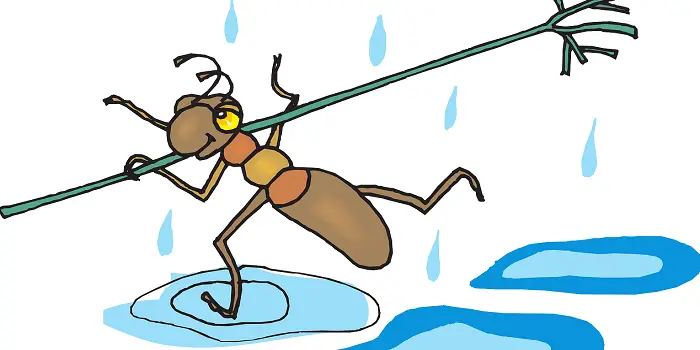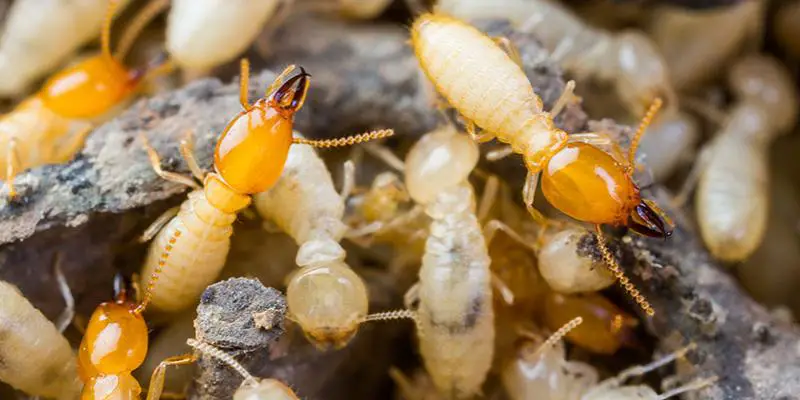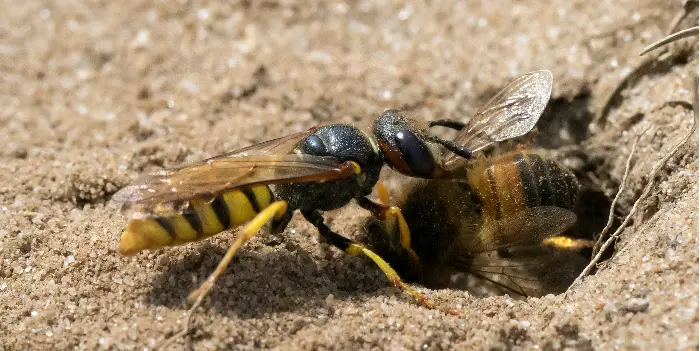
When it rains heavily, the ant nests and colonies that lie underground get flooded in a matter of a few minutes.
This disturbs the entire colony and forces them to go out and search for a new place to live safely.
Ants are already equipped with a variety of sensors, and during the rain, their behavior changes fast.
They will most likely look for a safer area that has not been affected by the heavy rain and flooding.
And that’s why they show up very close to your home.
Particularly in the kitchen, they can find a drier and safer shelter with food and water.
With that said, ants create an intricate tunneling system that works much like a storm drain.
So, as long as the rainfall in your area is not very heavy, the rainwater will pass through easily without pooling the nests.
And that’s what makes the ants tolerate and survive the rain.
To prevent these “rain ants” from appearing inside your home during the rainy season, try some of these easy tricks…
- Clear and remove all the trash from your kitchen
- Fill up any gaps and cracks around the door and window frames
- Use remedies like borax, essential oils, diatomaceous earth, or even baby powder to keep them away
The behavior of different ant species – when it rains
Although there are more than 12000 species of ants in the world and more than 700 types found in the US, the most common ones include carpenter ants, red imported fire ants, crazy ants, acrobat ants, pharaoh ants, leafcutter ants, and rover ants.
More or less, they all show similar behavior when it rain.
Species like “bamboo ants” will generally make their nest inside the bamboo twigs, which will float on the water during the rain.
Some species of ants will work hard during the rain to block the tunnel’s entrances.
They can use twigs, dirt particles, small rock pieces, or even their heads to do so.
Few ant species decide to stay in their colonies during the rain simply because they have created and stored the air bubbles in their chambers which will keep them dry and protected during the flood.
And also, active, hardworking groups of ants (including larvae and pupae) plan to create a raft using their bodies.
The raft will help them float on water until they can find dry ground for survival.

Welcome to ProShieldPest.com. I am Tina Jones. I have been working as a pest removal professional in Winslow, Arizona lately. At present, I love to spend my time with my family as a retiree.
Here I share all my knowledge and experiences to help people understand better how they can stop pests at their homes without actually killing them. Hopefully, the information you will find here will help in safeguarding your home! You can check more about me here.




